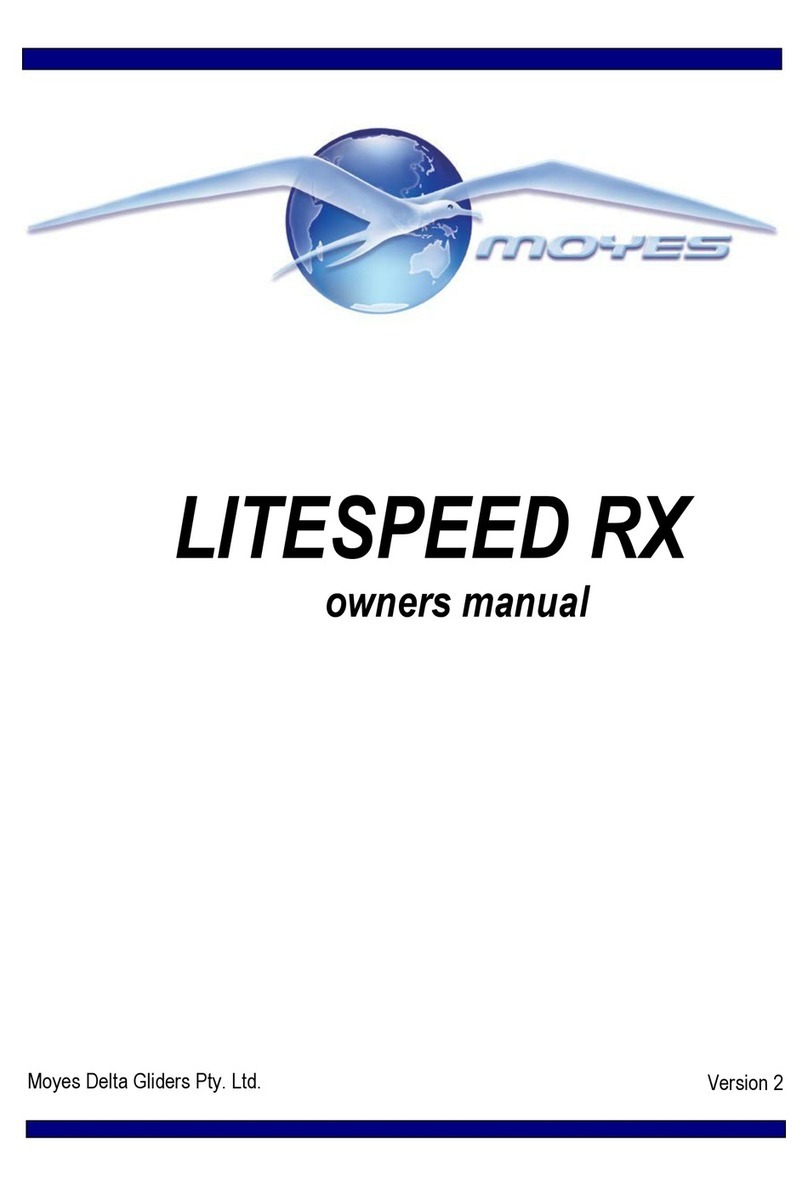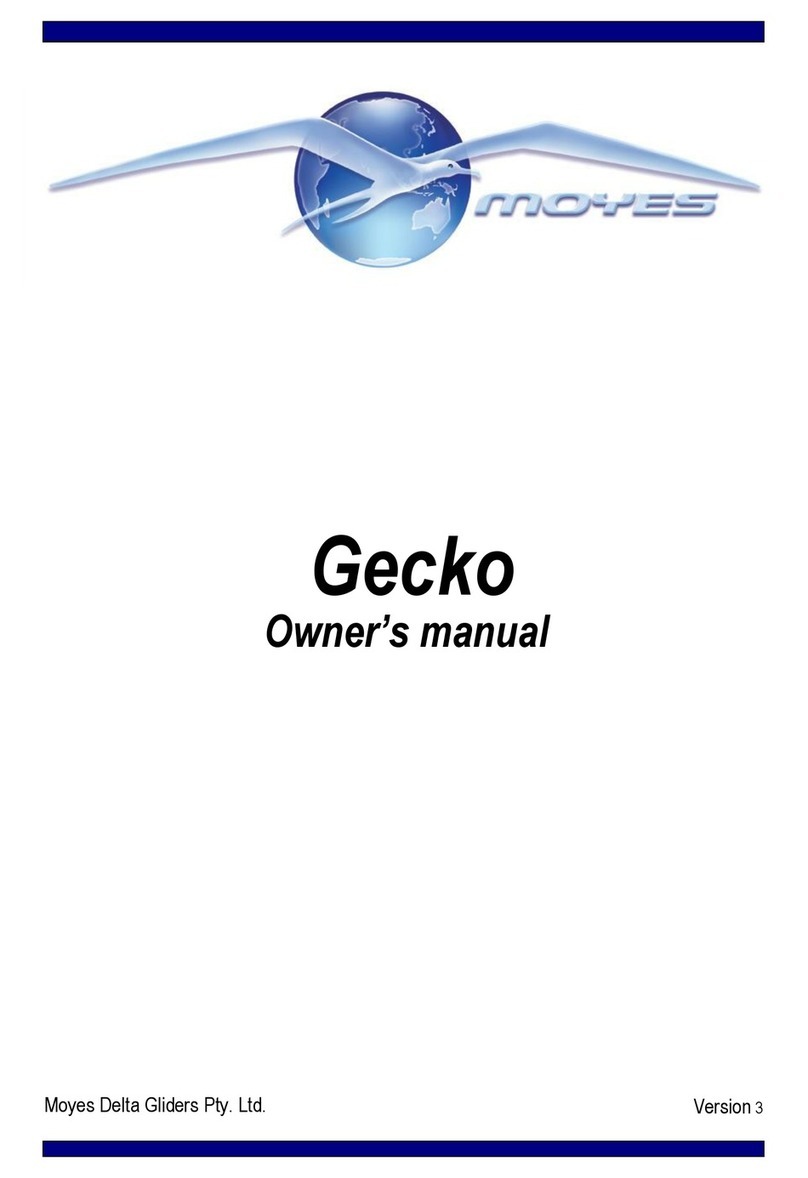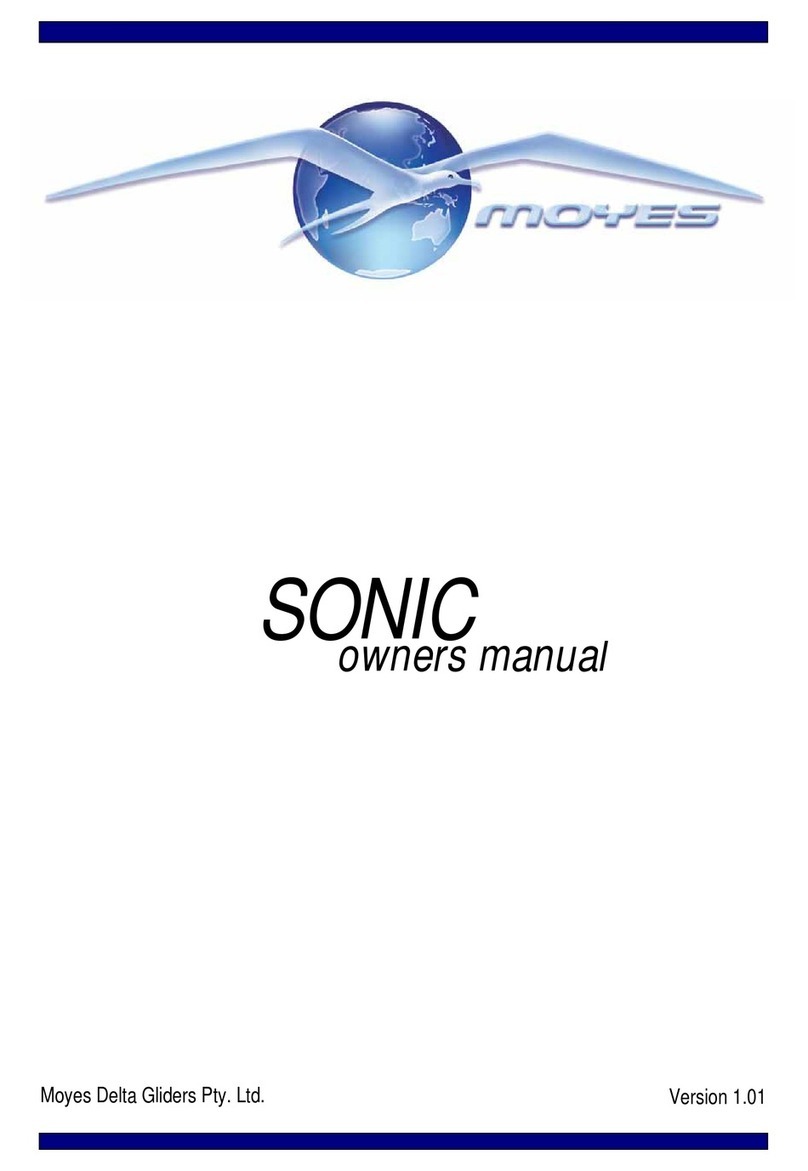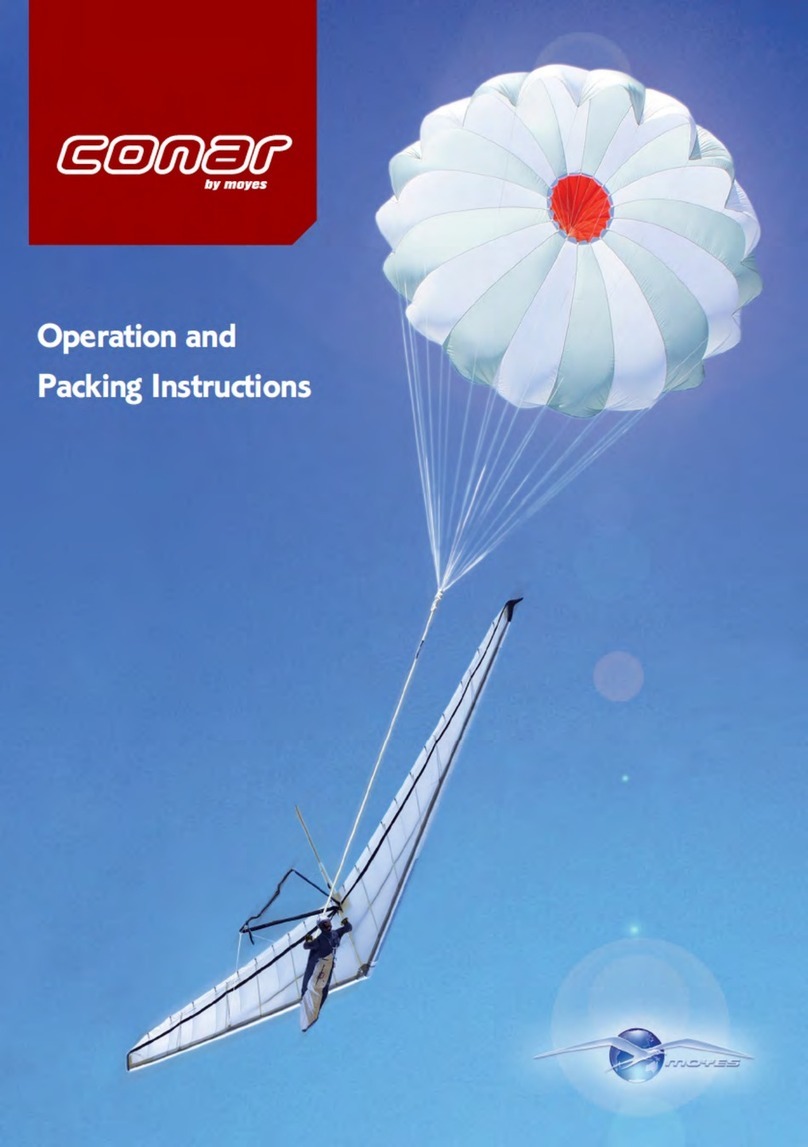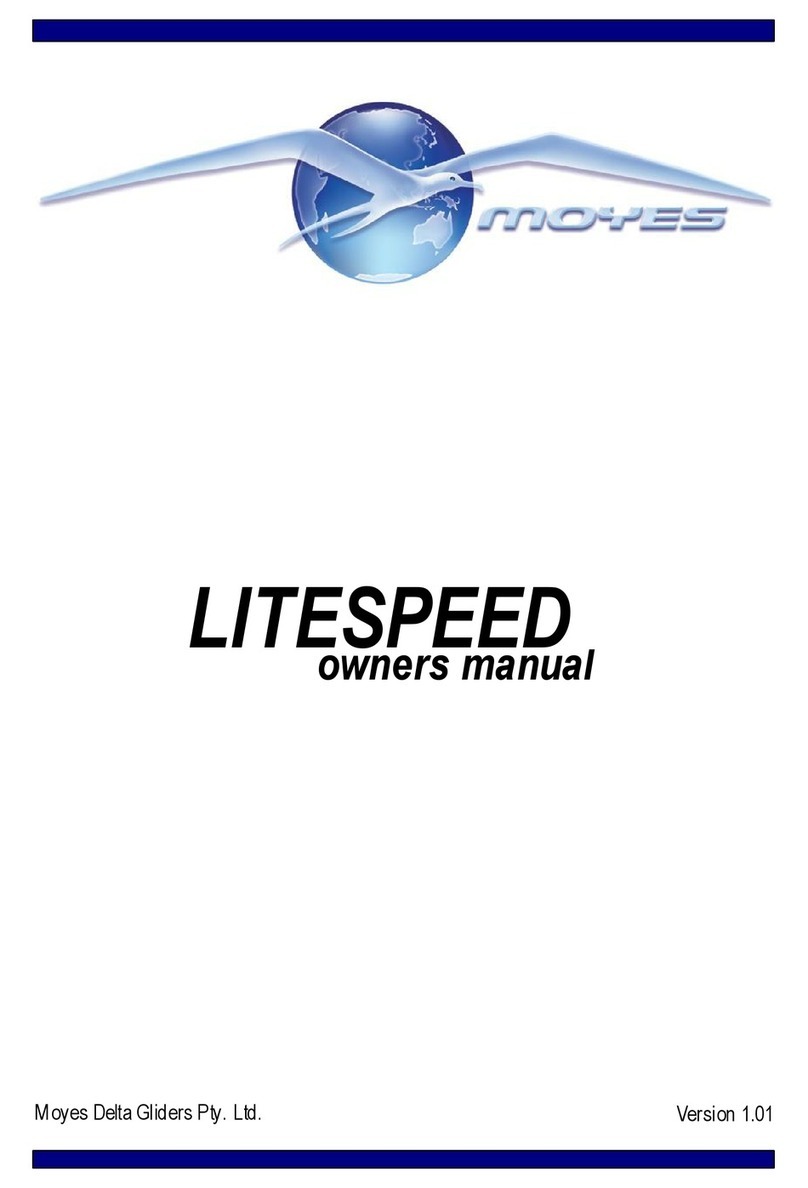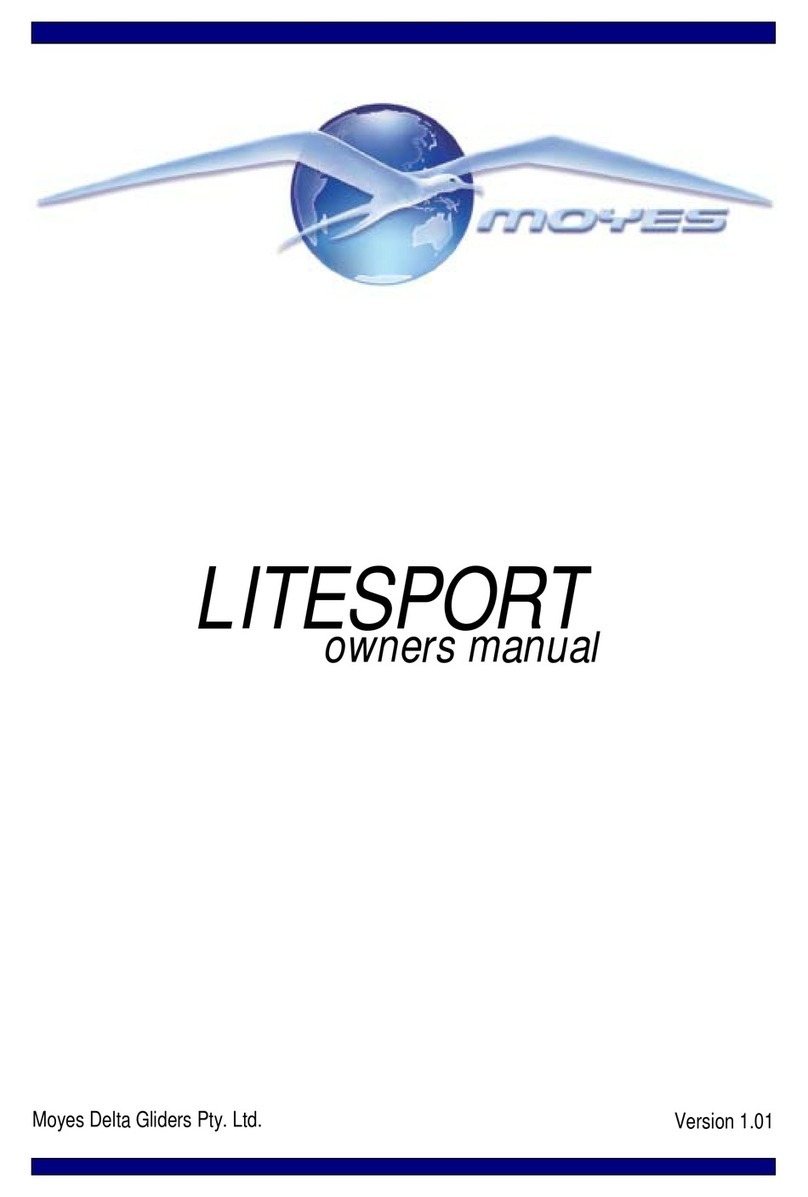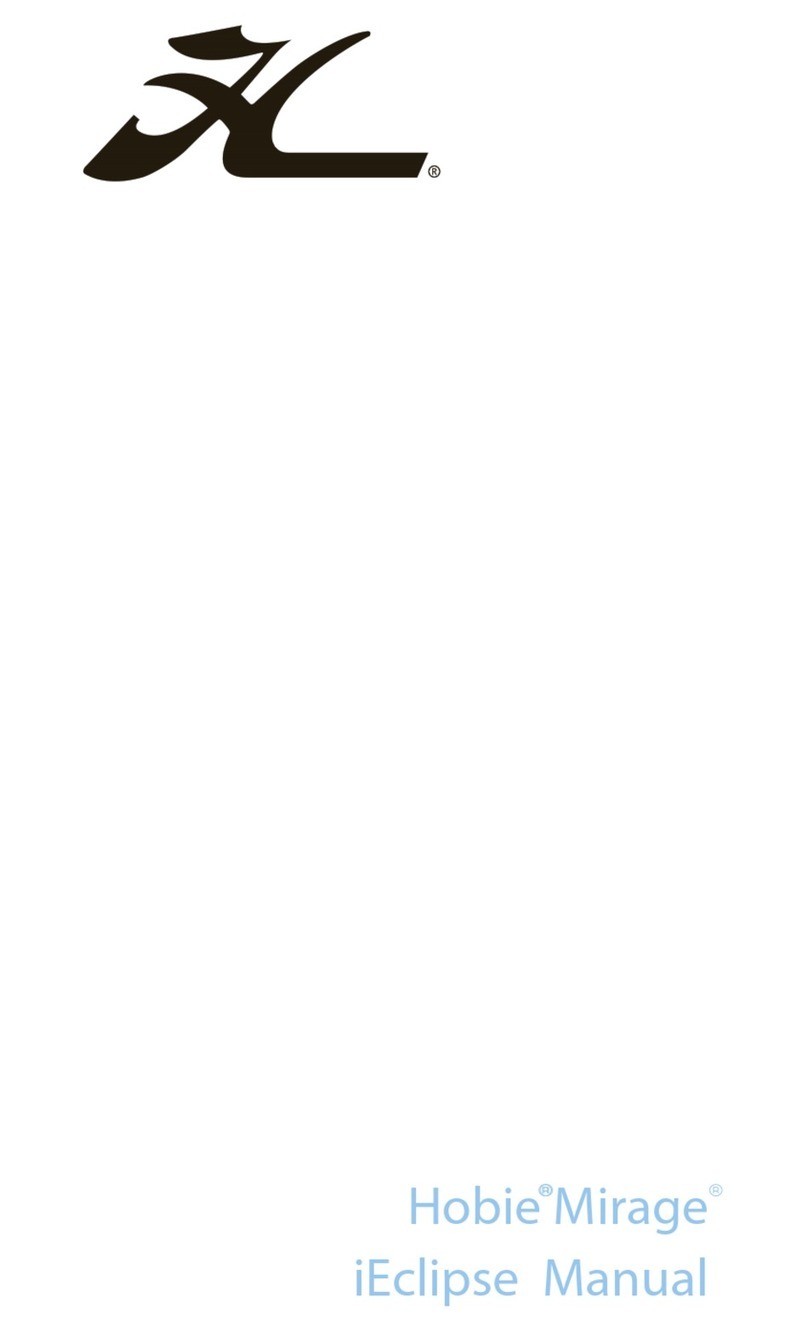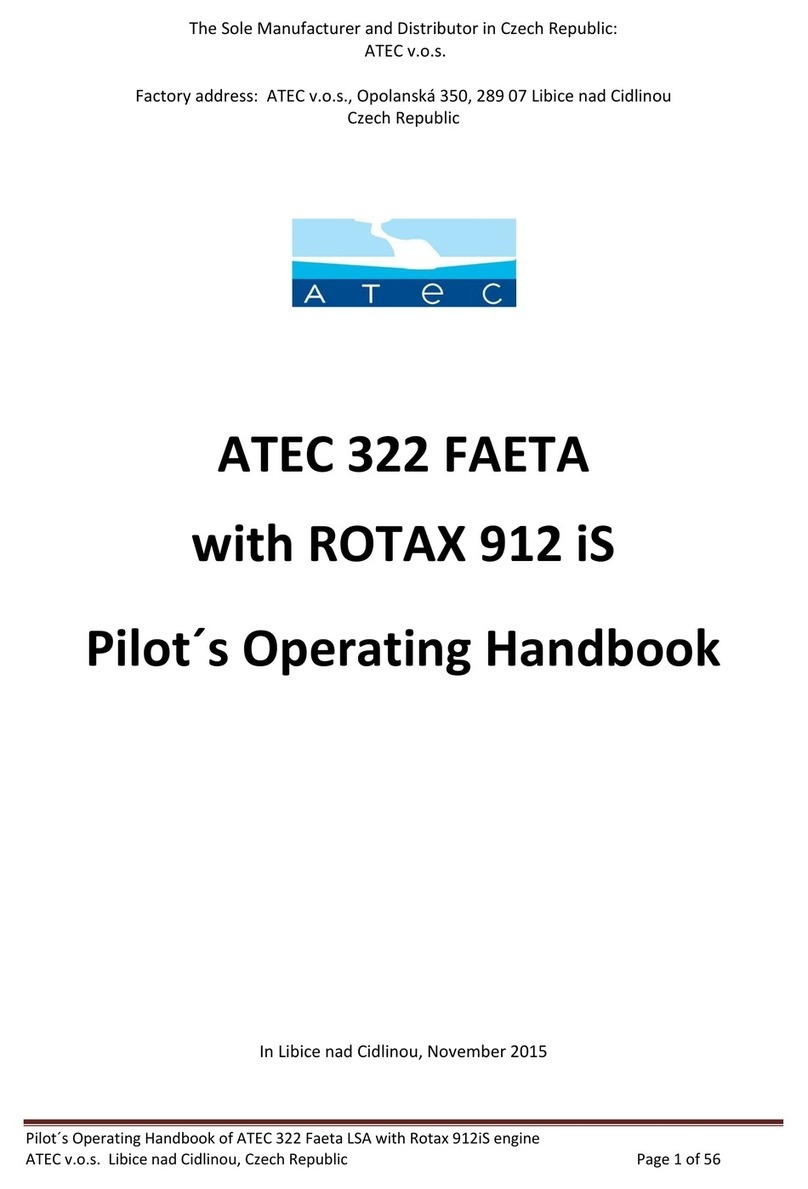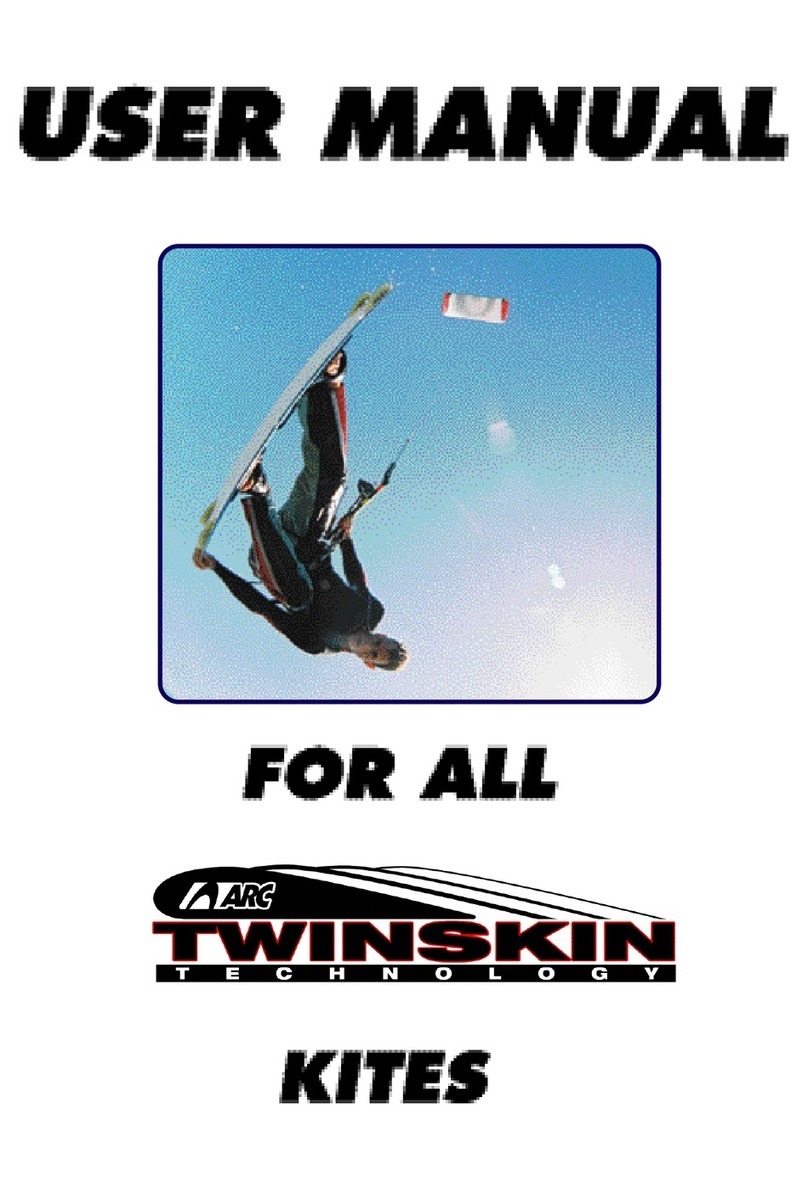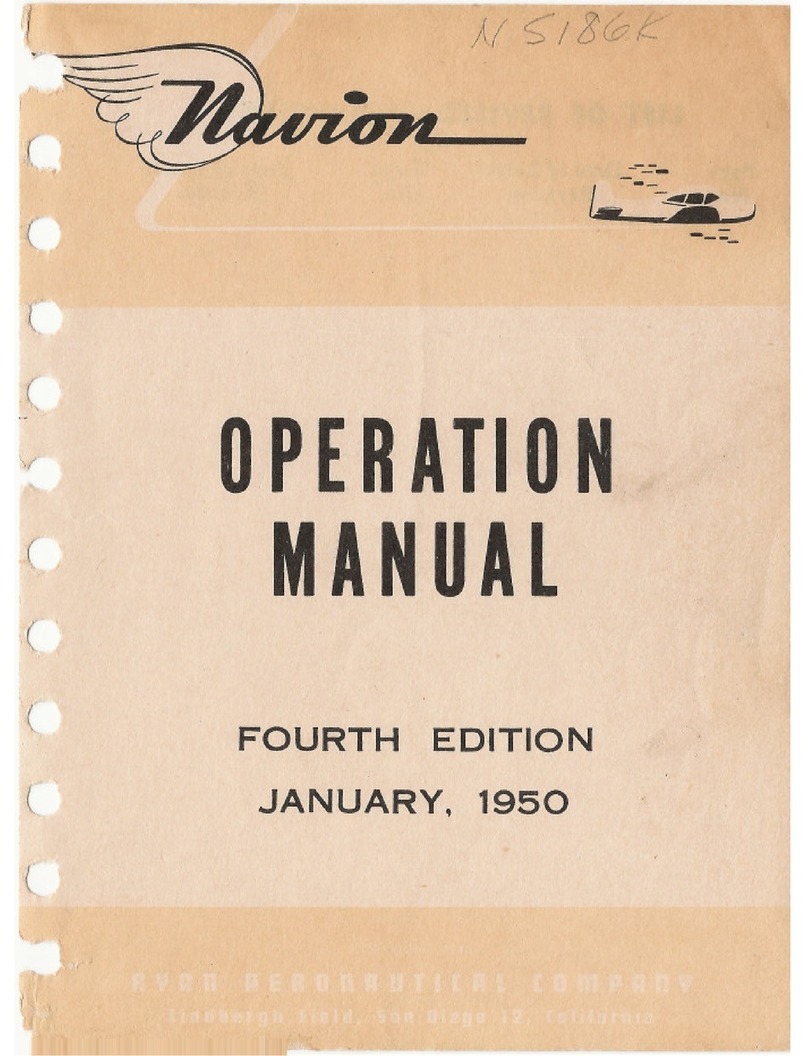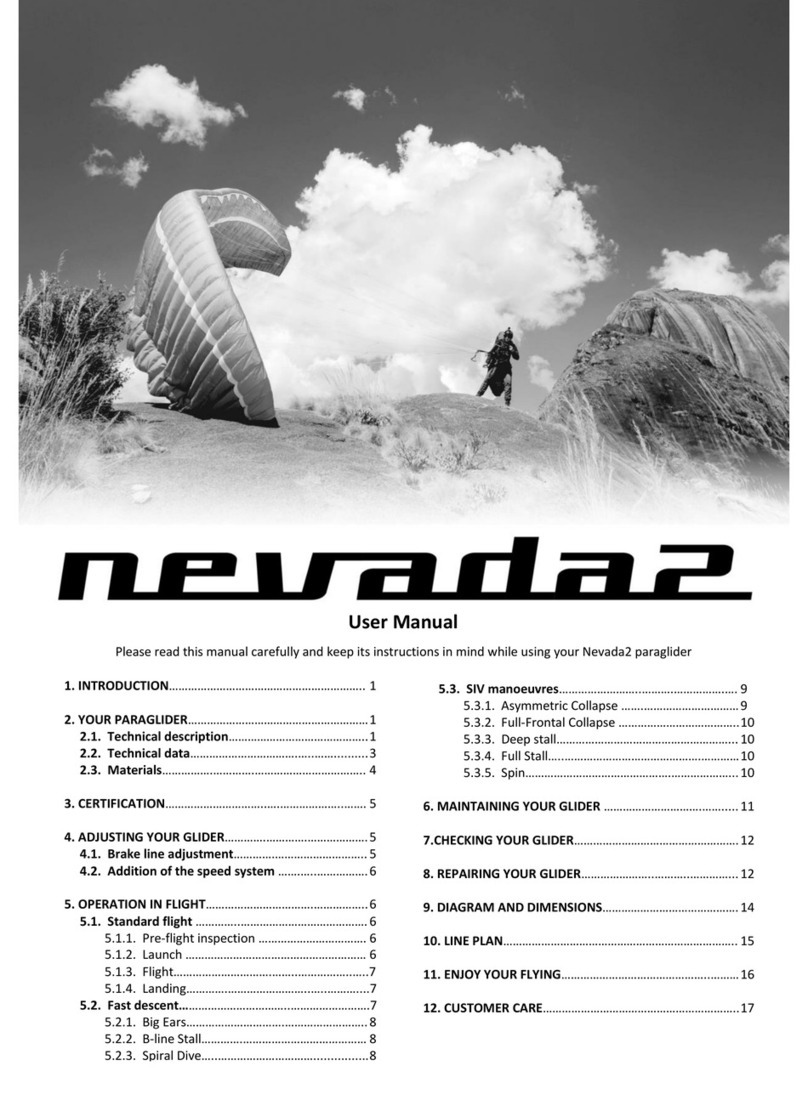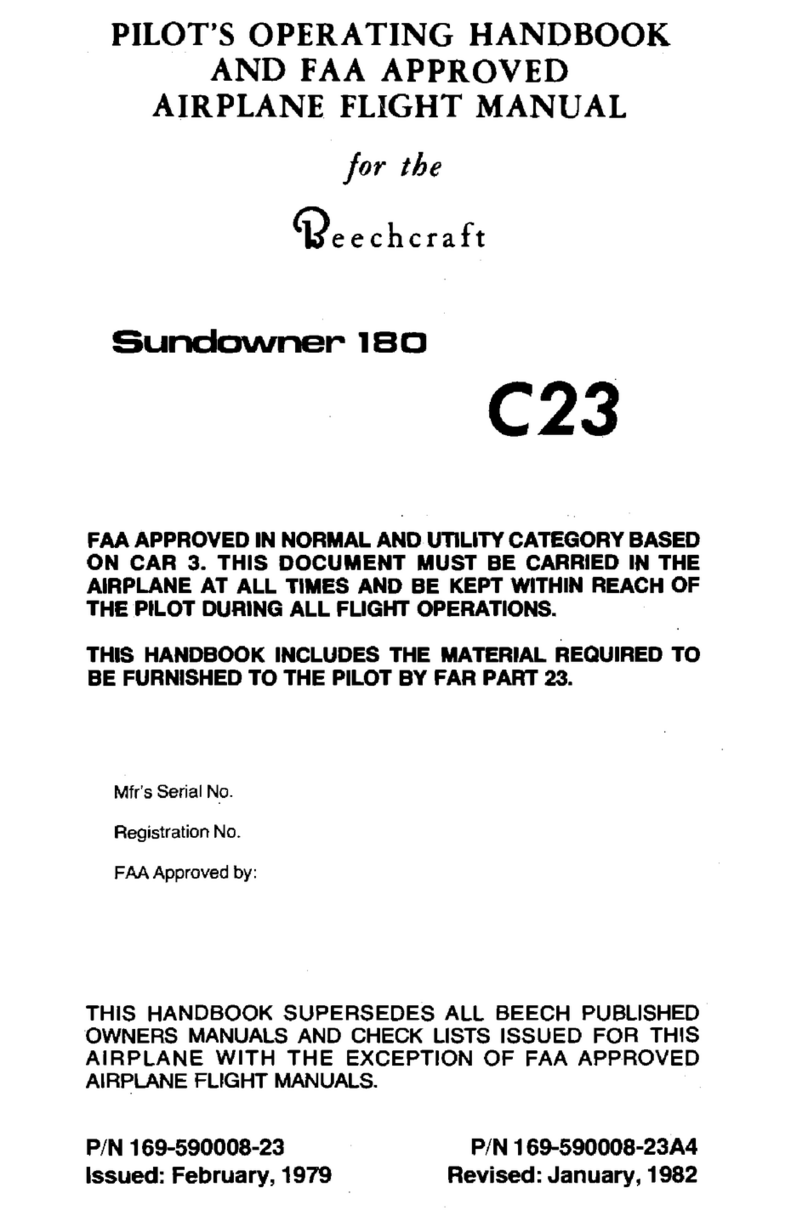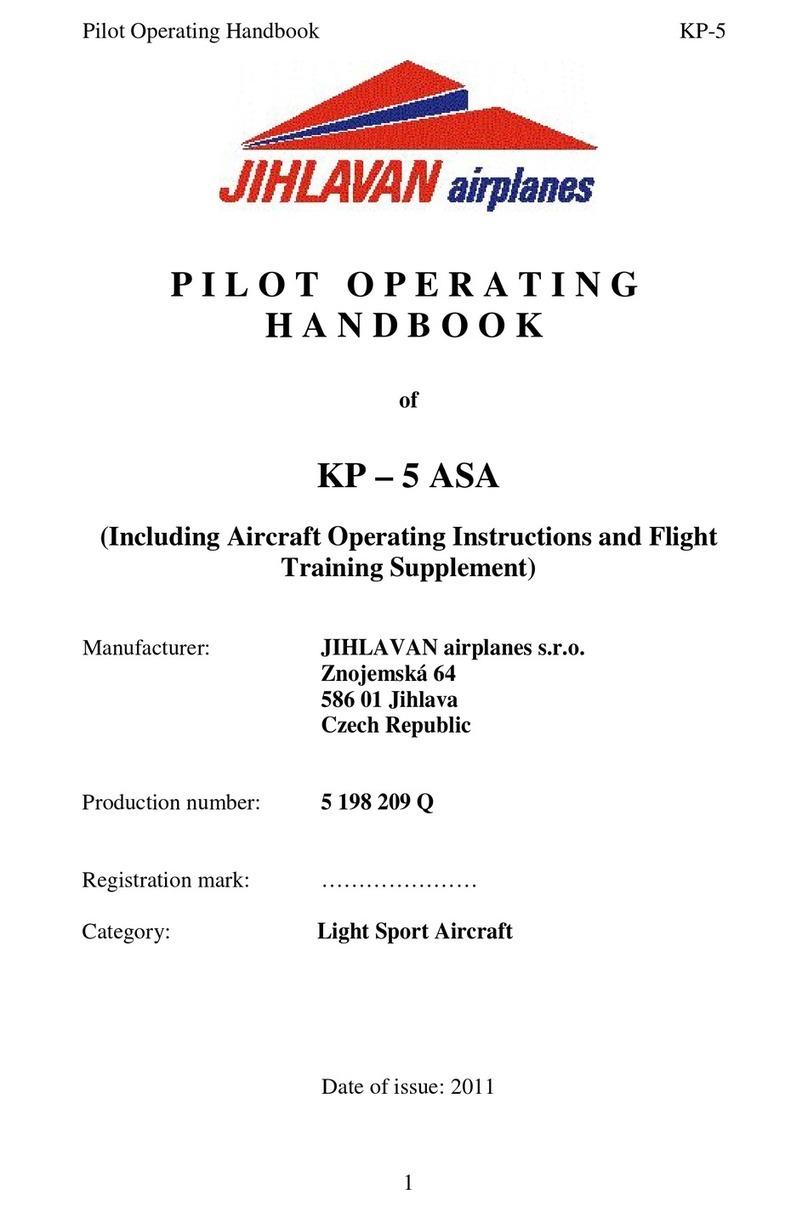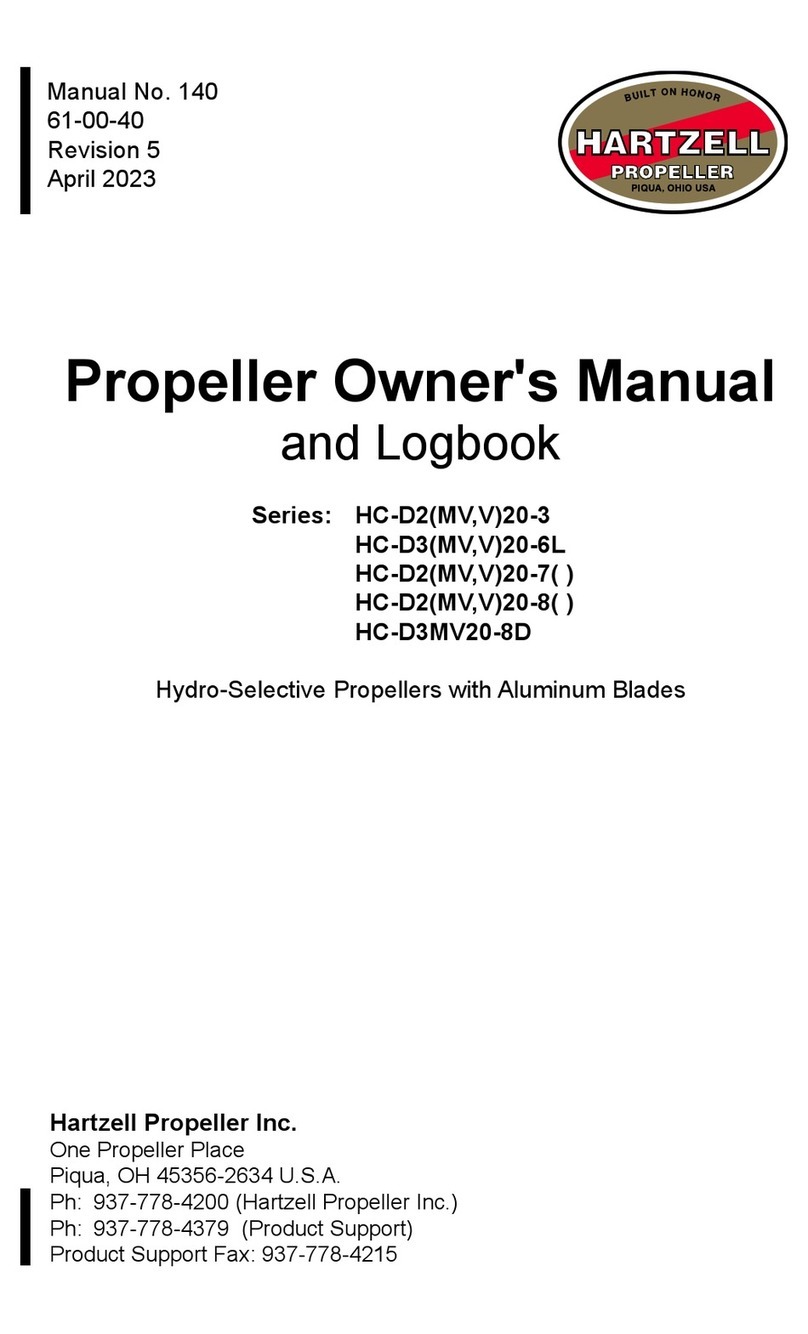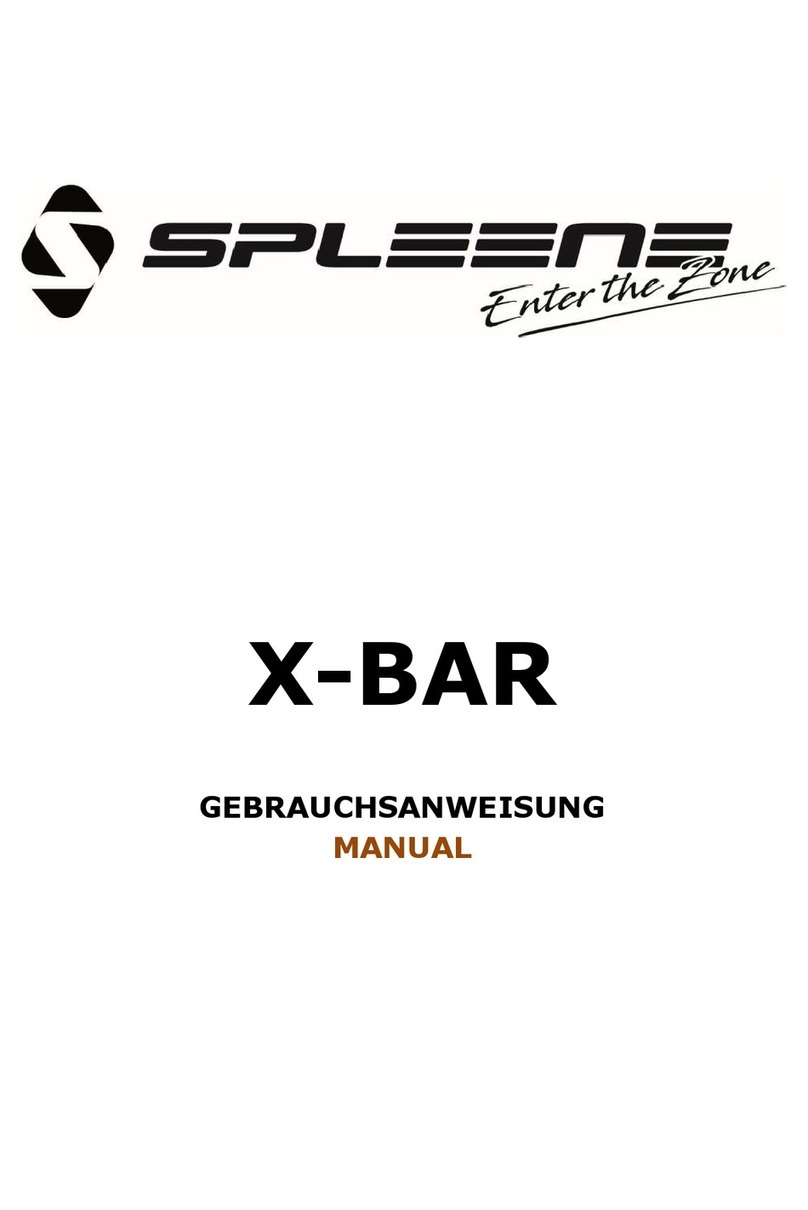moyes LITESPEED User manual

Moyes Delta Gliders Pty. Ltd. Version 1.01
LITESPEED
owners
manua
l


LITESPEED OWNERS MANUAL
Version 1.01 1
CONTENTS
Amendments ..........................................................................................2
Introduction.............................................................................................3
Description of Design.............................................................................4
Specifications .........................................................................................5
Operating Limitations .............................................................................6
Disclaimer...............................................................................................7
Getting Started .......................................................................................8
Assembly Procedures ..........................................................................11
Pre-Flight Check...................................................................................16
De-Rigging the Litespeed.....................................................................18
Flying the Moyes Litespeed .................................................................22
Tuning Hints..........................................................................................26
Performance Tuning.............................................................................28
Glider Care ...........................................................................................30
Maintenance Schedule.........................................................................32
Sail Removal ........................................................................................33
List of Fasteners & Airframe Bolts .......................................................34
AN Bolt Index...................................................................................34
Checking The Litespeed Stability System ...........................................35
Purchase Record..................................................................................37
Maintenance Log..................................................................................37

LITESPEED OWNERS MANUAL
Version 1.01 2
AMENDMENTS
Version Date Chan
g
es
1.00 24/12/2002 Converted Owners Manual to new format.
1.01 28/7/2003 1. Updated all assembly drawings.
2. Corrected page 9 paragraph 4 – referring to the positioning of the
sail webbing.

LITESPEED OWNERS MANUAL
Version 1.01 3
Moyes Delta Gliders Pty. Ltd.
1144 Botan
y
Road, Botan
y
NSW 2019 Australia T: +61
(
0
)
2 9316-6466 F: +61
(
0
)
2 9316-8488 E: mo
y
es
@
mo
y
es.com.au
INTRODUCTION
Thank you for choosing the Moyes Litespeed. You have chosen wisely.
The Litespeed incorporates the latest high performance hang gliding
design technology.
Since 1967, Moyes Delta Gliders has strived to be on the cutting edge of
developing hang gliders of the highest calibre. A family owned business
operating under homespun values, we aim to provide a comprehensive
international network to service all pilots. Even further, we work with some of
the best pilots in the world to ensure that our gliders are stringently made and
tested in order to improve their performance, handling, and safety.
We wish you the very best flying,
The Moyes Team

LITESPEED OWNERS MANUAL
Version 1.01 4
DESCRIPTION OF DESIGN
The Moyes Litespeed is a glider designed by elite competition pilots for competition and
enjoyable high performance cross country flying. The Litespeed utilises a similar plan
form as its predecessors the Xtralite and CSX, and has improved other facets of the
glider to provide better performance, safety and handling.
The Litespeed features a 7075 aluminium airframe which allows minimum weight with
excellent flex characteristics. The leading edge features a step down taper design with
revised sleeving and tube diameters to produce a lighter weight outer leading edge with
improved flex distribution across the length. The weight reduction provides considerable
reduction of inertia and thus roll pressures are minimal.
The elliptical fibre glass wing tip has been a feature of Moyes high performance gliders
since the early 80’s. The fibre glass tip creates a washout distribution allowing better
turning coordination than conventional designs. With the full tight VG setting, the fibre
glass tip allows for a tighter mainsail and a more desirable washout distribution.
The Litespeed features a revised sail design which allows for minimum twist without
losing pitch stability. The double surface has been increased to 92% which provides
better washout control under positive load and allows the enclosed stability system to be
mounted further rearward for better support. The leading edge tension has been markedly
increased to minimise airfoil distortion at high speeds. Many design steps have been
taken to produce a low minimum flying speed and allow easycontrol at these speeds.
The pitch stability system utilises cable braced inner and outer aluminium sprogs
providing support for battens 7 to 11 via two transversal battens. The inner sprog
features a unique compensator system operating from the geometrical change of the
X-bar to leading edge angle. This allows for the inner sprog to rise 80mm when the VG
is released. The stability system was designed with maximum strength and stiffness in
mind, and demonstrates excellent structural integrity under any flight load.
The Litespeed sail has a total of 8 internal cloth ribs. These internal ribs restrict the
under surface from ‘blowing out’ which prevents pilot induced oscillations. The internal
ribs are cut to a specific airfoil, which produces the desired under surface camber for low
drag high speed gliding.
The Litespeed features a spar constructed entirely of pre-impregnated carbon fibrecloth.
The pre-impregnated carbon provides maximum consistency in production. The spar
utilises combinations of biaxial fibre and unidirectional fibre to produce load absorbing
flexibility and maximum impact resistance.

LITESPEED OWNERS MANUAL
Version 1.01 5
SPECIFICATIONS
Model Size Litespeed 3 Litespeed 4 Litespeed 5
Area 12.6sq m
136 sq ft 13.6sq m
146 sq ft 14.5sq m
156 sq ft
Span 9.6 m
31.5 ft 10.0 m
32.8 ft 10.4 m
34.1 ft
Nose Angle 130 to 132 deg 130 to 132 deg 130 to 132 deg
Aspect Ratio 7.2 7.4 7.5
Glider Weight 31.9 kg
70.4 lb 33.6 kg
74 lb 34.5 kg
76 lb
Hook-In-Weight 55-95kg
120-210 lb 68-110kg
150-240 lb 75-120kg
165-265 lb
Packed-Length 4845mm
15’11” 4950mm
16’3” 5150mm
16’11”
Short-Packed Length 4200mm
13’9” 4330mm
14’2” 4500mm
14’9”
C of G Front of Keel 1310mm
51.57” 1363mm
53.66” 1370mm
51.94”
Number of Battens:
Mainsail
Undersurface
21
6
23
6
23
6
VNE 53mph
85kph 53mph
85kph 53mph
85kph
VA 46mph
74kph 46mph
74kph 46mph
74kph
Trim Speed 21mph
34kph 21mph
34kph 21mph
34kph
Stall Speed 16mph
26kph 16mph
26kph 16mph
26kph
Max Speed 77mph
124kph 77mph
124kph 77mph
124kph
Best Glide Speed 28mph
45kph 28mph
45kph 28mph
45kph
Best Glide Angle 15:1 15:1 15:1
Glide Angle 10:1 43mph
69kph 46mph
75kph 45mph
73kph

LITESPEED OWNERS MANUAL
Version 1.01 6
OPERATING LIMITATIONS
Your Moyes Litespeed is a sophisticated state of the art high performance hang glider.
If maintained correctly it will give you years of safe enjoyable soaring. However, it is
important that you display a healthy respect for all aspects of aviation and that you
especially understand the increased risks of flying in dangerous conditions or in a
manner that exceeds the glider’s operating limitations.
•Flight operation should be limited to non-aerobatic manoeuvres where the pitch
angle doesn’t exceed 30 degrees up and down to the horizon and bank angles don’t
exceed 60 degrees
•The Moyes Litespeed has been designed for footlaunched soaring flight and should
not be flown by more than one person at a time
•It should not be flown backwards or inverted
•The recommended minimum pilot skill level is Advanced (Hang 4)
•The Moyes Litespeed should not be flown with auxiliary power
•The Moyes Litespeed should not be flown in excess of the placarded VNE or VA
•VNE (speed never to exceed): 53 mph / 84.8 kph
•VA (maximum rough air manoeuvring speed): 46 mph / 73.6 kph
•Stall speed with maximum pilot weight: Less than 25 mph / 40 kph
•Maximum speed with minimum pilot weight: Less than 55 mph / 80 kph
The Moyes Litespeed will resist spinning and will recover quickly if control pressures are
relaxed. Recovery from a stalled turn can be achieved without extreme height loss or
without extreme attitude change if the angle of attack is reduced. Recovery from such an
incipient spin will be achieved within half a turn if the angle of attack is lowered to a
normal flyingangle.
The Moyes Litespeed has been tested and certified to the USHGMA and DHV
standards. These standards require ultimate load tests at:
•Maximum lift angle of attack at a speed of 65 mph / 104 kph
•Negative 30 degrees angle of attack at a speed of 46 mph / 73.6 kph
•Negative 150 degrees angle of attack at a speed of 32 mph / 51.2 kph
•Pitching moment tests at 20/32, 37/59 and 54/86 mph/kph respectively, to display
the gliders inherentpositive pitch stability through a broad range of angles of attack
The Moyes Litespeed is capable of easily flying at speeds greater than the VA and VNE.
We recommend you use an accurate airspeed indicator and familiarise yourself with
control bar positions at these speeds and normal flying speeds.

LITESPEED OWNERS MANUAL
Version 1.01 7
DISCLAIMER
The owner and operator must understand that due to the inherent risk involved in flying
such a unique vehicle, no warranty is made or implied of any kind against accidents,
bodily injury or death. Operations such as aerobatic manoeuvres or erratic pilot
technique may ultimately produce equipment failure, and are specifically excluded from
the warranty.
This glider is not covered by product liability insurance, nor has it been designed,
manufactured or tested to any state or federal government airworthiness standards
or regulations.

LITESPEED OWNERS MANUAL
Version 1.01 8
GETTING STARTED
Your new Moyes Litespeed may have been shipped to you in the 4.5 metre breakdown
form. If so, you can assemble your glider to its full length by following the assembly
procedures. All references to ‘top’ & ‘bottom’ and ‘left’ and ‘right’ are referred to with the
glider in flying mode.
Please check your packing list.
•Glider
•2 x Back section leading edges: note that the back sections are different between
left and right
•1 x Batten Set: Right=Green/Left=Red/Blue=Undersurface
•1 x Speed Bar
•2 x Tip Bags
•3 x Padding Pieces: A-Frame top& bottom, Keel sleeve
•1 x Batten Pattern
•1 x Snack Pack with owner’s manual and Batten Profile
Assembly from 4.5m Breakdown Form
1. Open the glider bag and roll the glider onto its undersurface.
Undo the straps and extend the sail.
Picture 1
Lay the glider on
its undersurface
and unfold the sail.
2. Expose the leading edge/cross bar junction through the inspection zip. Remove the
bubble wrap and tape from the leading edge/cross bar junction and the end of the
middle sleeve.
Picture 2
Remove packing materials from leading edge end.

LITESPEED OWNERS MANUAL
Version 1.01 9
3. Insert the right hand back section of leading edge. The right hand back section
differs from the left in the mounting of the outer sprog. You can check this by
picturing that the cable must be on the top side of the leading edge and the sprog
must fold inboard. Push the back section into the mid sleeve while depressing the
push button pin. Continue to push the back section in until it reaches its stop, then
rotate the back section until the mid sleeve location holes align with the push
button pin. Closely check that the push button pin has fully released and that the
back section is secure against rotation forces.
Picture 3
Insert the back
ends of the
leading edge.
4. Secure the sail by attaching to the tip webbing using the clevis pin and ring supplied.
Insert the pin through the webbing and into the bottom hole at an angle. Straighten
the clevis pin while sliding the webbing towards the leading edge as shown in
Picture 4. Ensure the tip webbing is not twisted and is on the bottom of the leading
edge.
Picture 4
Insert sail pin into end of leading edge.

LITESPEED OWNERS MANUAL
Version 1.01 10
5. Repeat steps 1-4 to install the left hand back section of leading edge.
Your Litespeed will now be ready for the standard assembly. Before flight, make
a thorough inspection of all tubing and nuts and bolts to ensure no damage has
occurred during transportation. (refer to section on pre-flight check).
Picture 5
Assembled glider
showing dive sticks
extruding from under
surface zippers.
The inner and outer sprogs must exit the sail from the large cord wise zippers.
The zippers must be opened when the glider is in standard break down form
with both sprogs folding toward the wing tip outside the sail.
IMPORTANT
!

LITESPEED OWNERS MANUAL
Version 1.01 11
ASSEMBLY PROCEDURES
1. Place the glider on the ground, zipper up. Open the bag, undo ties, remove A-frame
bottom padding and battens.
2. Assembly the A-Frame.
Picture 6
Standard uprights and
base bar assembly.
Roll the glider over so that
it is standing on the
control frame.
3. Roll the glider over so that it is standing on the control frame.
Picture 7
Roll the glider onto the
A-frame and attach the
front wire to the Bailey Block.
Take special care with the wires, the Litespeed features 1x19 cable which can
easily be kinked unless special care is taken.
N
O
TE
!
With standard uprights, the uprights will naturally toe-in as shown in
Picture 6. Hold the base bar and the upright, twisting the upright so the
connection lines up.
N
O
TE
!

LITESPEED OWNERS MANUAL
Version 1.01 12
After initial assembly it is suggested that the nose batten be left in but pulled
out slightly and left beside the nose plate for pack-up. Check that the nose
batten sits over the lug on the keel securely.
N
O
TE
!
4. Insert the ring of the lower front wires in the Bailey Block making sure that the spring
is firmly locked and the wires untwisted.
Picture 8
Attaching the front wires to the Baileys Block.
5. Insert the nose batten. The batten may need some “feeding” through the Sail by
pulling the sail forward to remove any wrinkles as the batten slides into its pocket.
Picture 9
Insert nose batten.
6. Carefully spread each wing making sure thatyou do not raise them above the keel.
Picture 10
Spread the wings.
Check bottom wires are not twisted or kinked.
N
O
TE
!

LITESPEED OWNERS MANUAL
Version 1.01 13
DO NOT USE EXCESSIVE FORCE WHEN TENSIONING THE GLIDER.
If excess force is encounteredcheck:
!The side wires are not twisted or kinked
!The cross bar retainer wire is not caught on the nose plate assembly
!The floating crossbar centring wire is notcaught on a cross bar
assembly junction
!The pull back wire or VG pulleys are not caught in the hang loop assembly
7. To tension the crossbar, pull the cord coming out of the keel aft of the sail.
Check that the cable and rope are not twisted and that the spring lock is firmly
locked. In strong winds the glider can be particularly difficult to tension. Have a
helper gently raise and pull one wing, this reduces the pressure on the centre
section andallows it toslide more freely.
Picture 11
Tension the glider.
8. The Litespeed is equipped with a removable keel aft section. The glider can be left
resting on it, facilitating the fitment of the washout struts, and battens. If desired, the
glider may now be raised onto its keel to complete the assembly. This also assists
with keeping the sail clean by keeping the tips off the ground.
Picture 12
Raising the glider ontothe keel can make assembly
easier and keeps the sail clean.
WARNIN
G
!
The glider may fall to one side if pushed or blown by the wind - this may result in
wing tip damage. It is recommended that you only use in flat level ground and in
nil wind. Use with care!
WARNIN
G
!

LITESPEED OWNERS MANUAL
Version 1.01 14
9. Insert battens gently from the root towards the mid span, battens 1-6 only for the
Litespeed 4 & 5, battens 1-5 only for the Litespeed 3. Use only gentle pressure
when inserting the battens, this will greatly extend the longevity of the batten
pockets. Red tipped numbered battens are for the left wing, green for the right, and
blue the under surface.
Picture 13
Insert battens #1 to #6
10. Open zipper at sail tip to allow access to inside of sail. Slide fibre glass rod through
end of sail and locate in the end of the leading edge. Ensure that the fibre glass rod
is pushed hard against its stop.
Picture 14
Inserting tip and fitting aluminium cap.
11. Fit aluminium cup of the tip lever to the end of the tip rod and tension tip by rotating
the flat end of the tip lever inboard. For extra leverage, place your thumb through the
loop that is attached to the end of the tip lever. Make sure the tip lever is locked
against the tip rod. Close the zipper.
Picture 15
Tension the fibre glass wing tip.
Make sure the tip lever is consistent on both sides. The tip lever should either
be above or below the tip rod when locked in place.
NOTE
!

LITESPEED OWNERS MANUAL
Version 1.01 15
12. Insert the remaining mainsail battens, 7 to 11 on the Litespeed 4 & 5 and 6 to 10 on
the Litespeed 3.
13. The battens have been adjusted in the factory, but may need to be readjusted upon
initial assembly. The batten tips simply screw into the end of the batten, therefore
the batten tension can be adjusted by either screwing the tip in or out.
The outer batten on each wing should be fitted with additional tension. Continue to
make minor adjustments to the outer batten tension until any wrinkles have been
removed from the upper surface.
Picture 16
Adjust the batten end so that it slightly
extends past the trailing edge.
14. Locate the inner and outer wire braced dive struts by placing them inside the sail,
below the webbing loop. Note that the action of closing the cord-wise zipper creates
the loop necessary to hold the strutin place.
15. Insert the under surface battens (blue) into their respective pockets.
16. Fit the nose fairing using the Velcro to keep a clean trim finish.
Picture 17
Fitting the nose nappy.
Do not forget this step as it is necessary for stability.
IMP
O
RTANT
!

LITESPEED OWNERS MANUAL
Version 1.01 16
PRE-FLIGHT CHECK
As with most high performance hang gliders, much of the hardware and structure is well
enclosed to give a streamlined finish to the wing. This means that you must look inside
the sail to check many of the important structural components. You should develop a
consistent routine that incorporates all the necessary checks. If you are distracted during
the routine, you should start again to ensure nothing has been missed.
1. As you should have already attached your harness to the glider, check that it is set
up correctly. Ensure that your parachute is well maintained and stowed appropriately
and that the bridle runs cleanly to the carabineer which is attached vertically to the
hang loops. If your harness height from base bar needs adjustment, it is best to
acquire the correct length loop from your Moyes dealer.
2. Move up to the suspension system and verify that the dingle-dangle is rotated
perpendicular to the keel and is free from the nose batten pocket. Check hang loop
and backup.
3. Open the under surface zip and inspect the cross-bar retainer wire. Pull the VG on
and off a few times to check that the crossbars are moving freely and the VG system
is operating smoothly and is tied firmly to the clip. Inspect the interior of each wing,
looking at the back side of the leading edges, the crossbar, and the crossbar
junctions. Check that the cross bar centring wire is free. This wire is partly loose in
VG full off and should become tightwhen VG is 3/4 on.
4.
5. Check the apex of the control frame ensuring all nuts are secure and thread is
showing beyondthe nut on the bolt end.
6. Sight along keel and move to the nose section, checking all nuts and bolts.
Test nose catch and ensure keel batten is located correctly. Re-attach nose fairing.
7. Sight along each leading edge to confirm a similar amount of leading edge
deflection (curve). Uneven curves will indicate a bent or damaged leading edge.
While sighting down the leading edges check each wing for dive stick symmetry, ie.
equal twist for left and right wing.
Check that all internal Velcro’s are attached and are of equal length. If one
side is disconnectedor too loose, it may cause a significant turn.
IMP
O
RTANT
!
It is easiest to inspect for tube damage when wings are slightly opened with
no battens in the sail. The entire length of the leading edge tubes can be
easily seen at this stage of the set up procedure through the under surface
zippers and centre zip. It is recommended to check for dents or bends at this
stage of set up before each flight.
N
O
TE
!

LITESPEED OWNERS MANUAL
Version 1.01 17
8. Move out along the wing looking and feeling for any damage. Open the zip where
the side wires enter the sail and check that bottom wires are not kinked, twisted or
damaged. Check the cross-bar/leading edge junction bolts and nuts and check that
the ball joint is not bent. Close zip on inspection port.
9. Open the long cord-wise zippers at sprog location and check both the front and rear
of each dive strut. Check that the wires are not kinked or twisted and check that the
ball joint thread is not bent. Close zip.
10. Continue out to wing tip and make sure the tip levers are properly installed and that
the zipper is closed.
11. Check all battens as you move along the trailing edge and be sure that the spring
tips are secure inside of the trailing edge pocket.
12. At the keel, check the top VG rope and the cross-bar restaining wire. Check that
rear wires are properly secured by the Bailey Block bolt.
13. Moving across to the other wing, repeat the process as you work your way back to
the nose of the glider. Carefully check the front bottom wires and nose catch before
inspecting the base of the control bar. Check bottom side wires for frayed strands
between thimbleand inner nico, and just outboard of the outer nico.
14. Ensure that the control frame assembly bolt passes through the base bar and the
corner knuckle.
15. Check the rigging, nuts, and bolts are in good order and that the VG rope is
threaded through the jam cleat and is secure.
16. Re-check harness, hang loops, and carabineer.
17. When finally preparing to fly, do a proper hang check ensuring that legs are through
leg loops, that harness zippers work, and that all buckles or clips etc. are closed and
working. Look again at your hangloops and carabineer(s).

LITESPEED OWNERS MANUAL
Version 1.01 18
DE-RIGGING THE LITESPEED
Disassembly of the Litespeed is virtually an exact reversal of the set-up procedure,
however, a few important points must be remembered to avoid unnecessary damage.
1. If desired, the Litespeed can be disassembled on its keel.
Picture 18
Removing the keel assists with assembly
and disassembly of the glider
2. Remove all battens starting from the tips, all the under surface battens, and the
glass tips. Place all battens in the batten bag.
3. Fold the sail tips
There are a number of ways to fold the sail tips. Two such ways are shown below.
Folding the Sail Tips - METHOD 1
•Fold the leading edge back onto itself.
•Roll the sail up from the trailing edge towards the leading edge.
•Fit the sail and theouter dive strut intothe boot.
The glider may fall to one side if pushed or blown by the wind. This may result in
wing tip damage. It is recommended that you only use it on flat level ground and
in nil wind. Use with care!
WARNIN
G
!
Other manuals for LITESPEED
1
Table of contents
Other moyes Aircraft manuals
